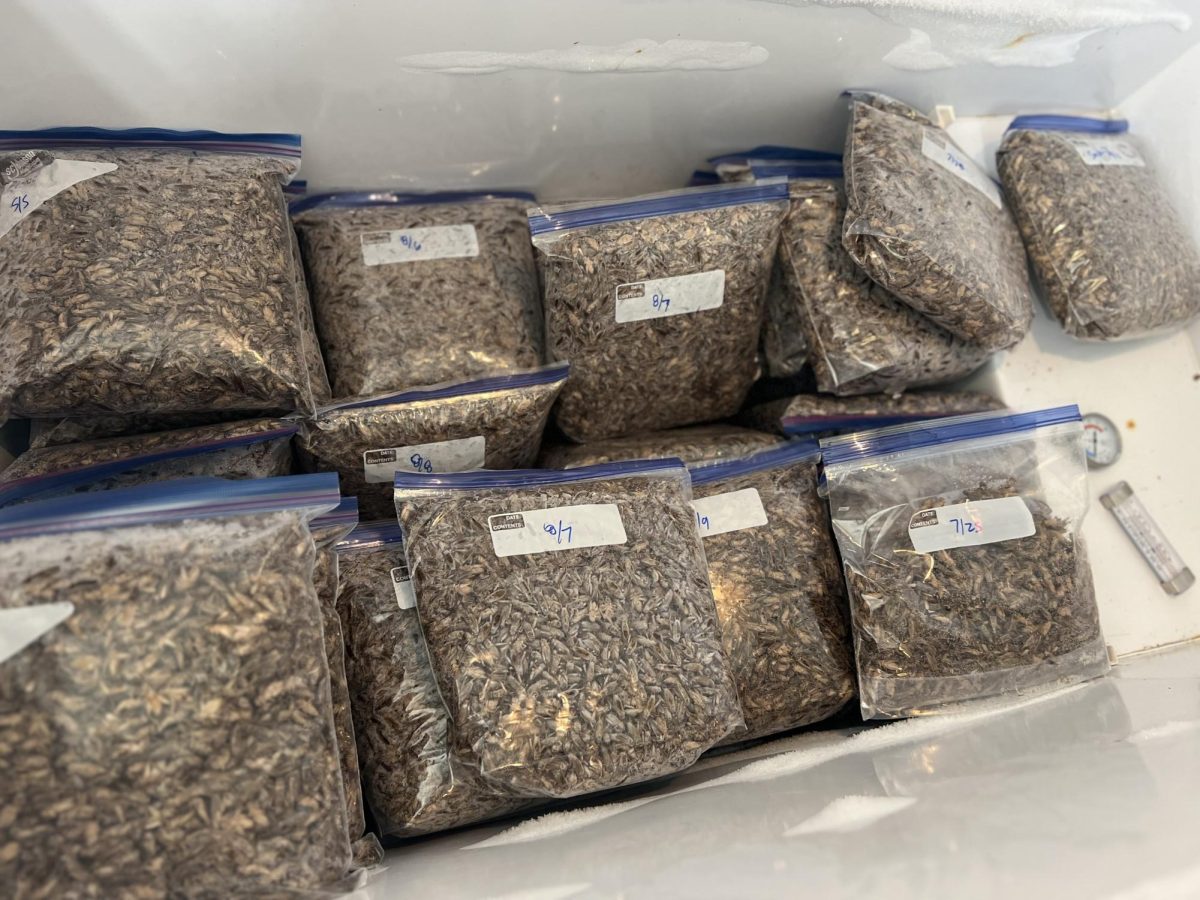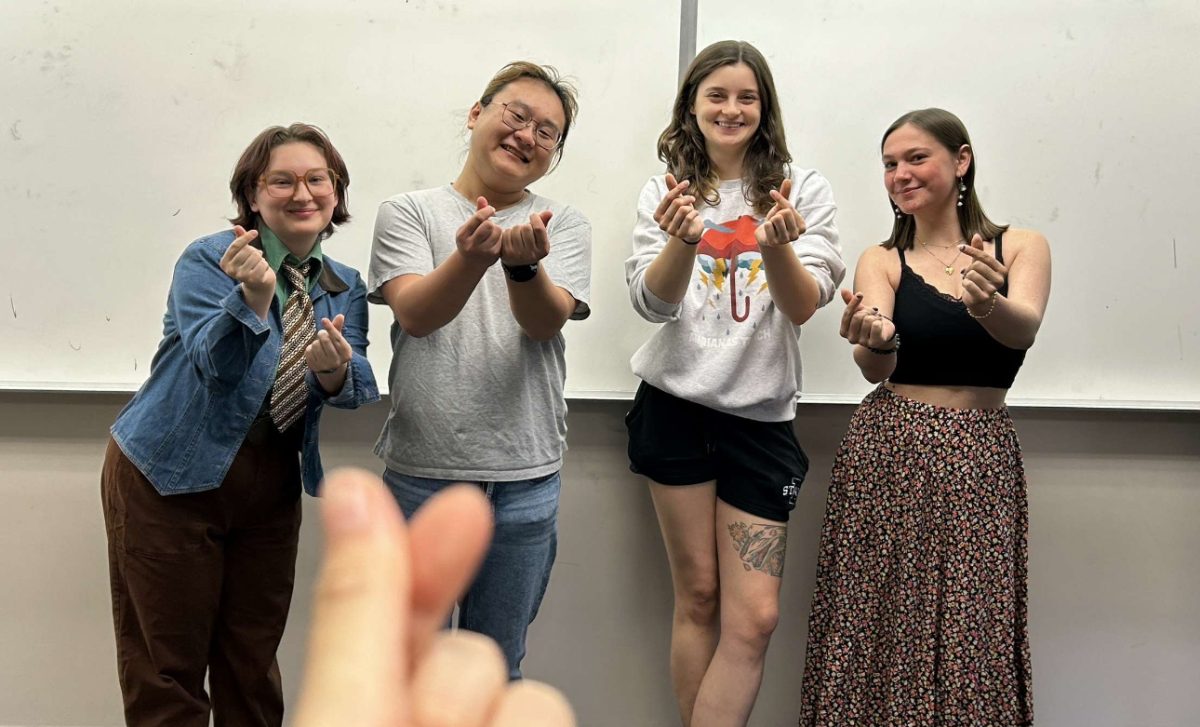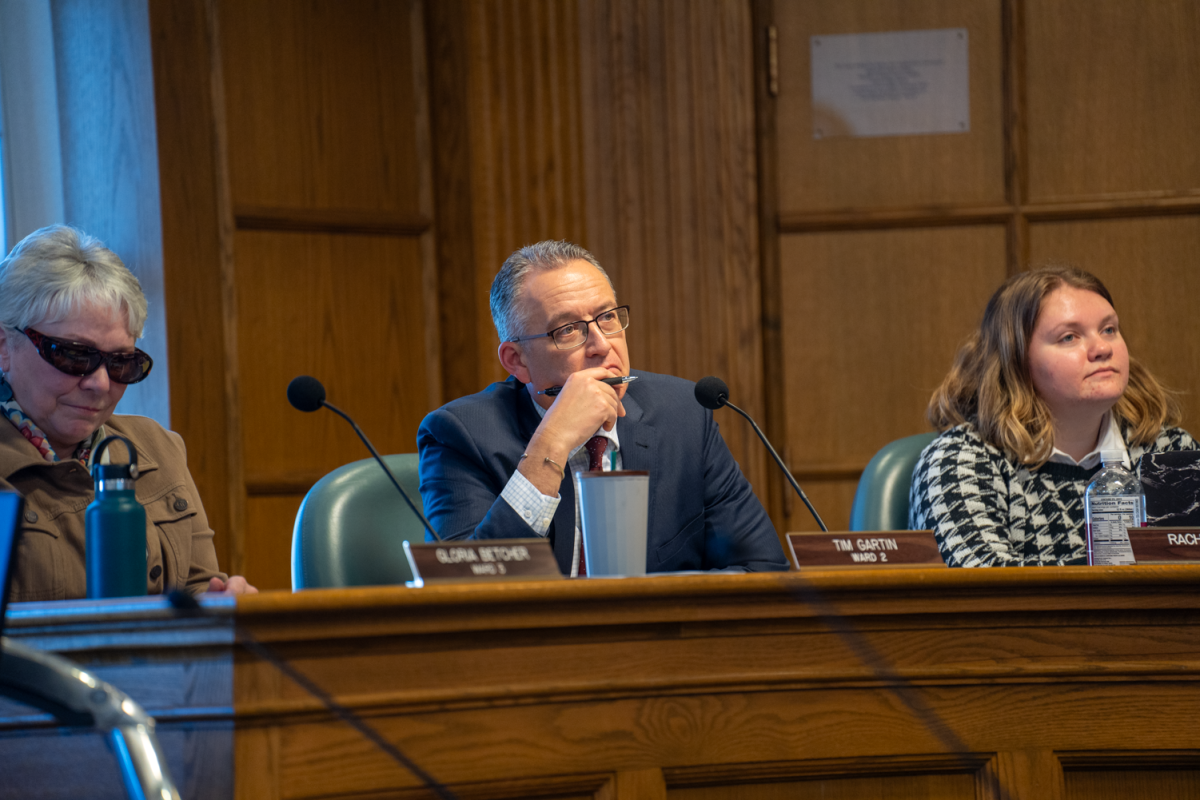Local business owner Shelby Smith is trying to change the way food systems in America operate with her company Gym-N-Eat Crickets, which sustainably produces crickets for human consumption.
Crickets are dense in protein and easy to farm. Smith farms crickets to increase the amount of sustainable protein products, as crickets require less land and food resources than larger livestock. Female crickets lay 10 to 20 eggs a day and take about 25 days to reach maturity. Smith raises her crickets in a gutted-out trailer home on the east side of Ames.
Once the crickets reach maturity, Smith dehydrates, roasts, seasons and powders the crickets to make roasted crickets, cricket energy bars and cricket protein powder. Smith said her most popular items are the roasted “Smokey BBQ” and “Fiesta” flavored crickets.
Smith said her father got her interested in uncommon business ideas.
“He really just kind of encouraged me to look at niche markets and things that not everybody was doing,” Smith said.
After reading an article about a woman raising crickets for consumption out in Keystone, Iowa, Smith said she bought 10,000 crickets.
Rachael Lacey is a graduate of the sustainable food systems program at the University of Michigan and wrote a thesis on crickets as food. Since graduating, Lacey now works for food banks in California.
Lacey said nutrition is consistent throughout crickets as what they eat has little impact on how nutritious they are for human consumption. Most of the fiber and protein in crickets is found in the exoskeleton.
“The ratio of iron and vitamin B-12 in crickets is way higher than that in any meat, so it’s actually a more nutritionally dense food for those nutrients that we see as really important parts of consuming meat,” Lacey said.
According to Lacey, the most common places where bugs are eaten as a main food source are Africa, Asia and parts of Central America.
Matthew O’Neal, a professor of entomology at Iowa State, said food consumption is all about perspective and what one society views as unusual, another views as a whole category of food.
“America is weird, the rest of the world eats insects,” O’Neal said. “It can be a larger part of their diet, more than just candy or snack crickets.”
O’Neal said lobsters and crickets are close cousins, and people pay top dollar for quality lobster.
“People thought tomatoes were poisonous back before tomatoes were brought into Europe,” O’Neal said. “All I’m trying to say is things change and tastes change. There’s nothing genetic about eating cows.”
Lacey said the first step in getting more people on board when it comes to eating insects is increasing people’s exposure to the idea.
“A lot of people have never even heard of it as a concept so when you first bring it up, they’re very startled and don’t really know what to think about it, or view it as something that no one does, that’s gross; when in reality, a lot of people do it, [people] just don’t know about it,” Lacey said.
Smith said she thinks the future of food is more localized and regionalized in terms of sustainability, as she believes the current food system has faults due to centralization.
“The future of food is going to have to be diverse. It has always been diverse,” Smith said.





















Tim Hansen | Dec 4, 2023 at 8:05 pm
Sorry, the rest of the world is crazy for eating bugs.